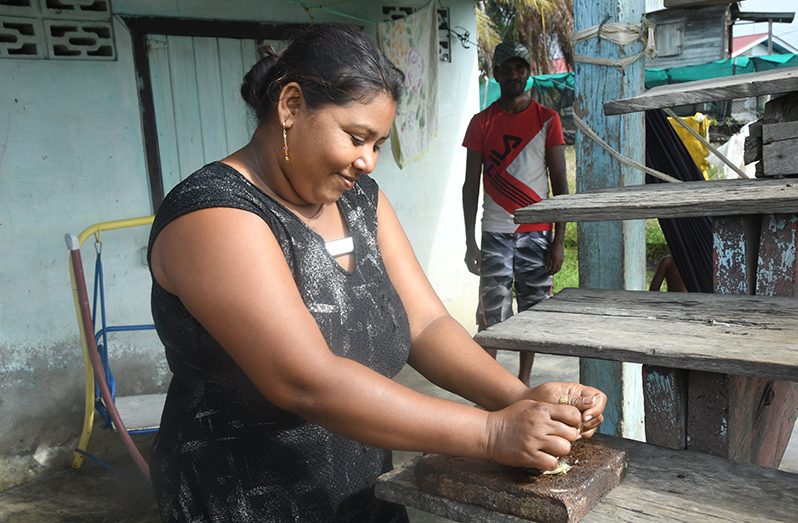–tools of the flavour
WHEN our East Indian foreparents came to Guyana in May 1838, they brought with them much more than colourful fashion and captivating music; they brought a vibrant culinary culture, from curries and chutneys to rotis and chokas. The bold taste of India remains ever-present in the day-to-day lives of all Guyanese. Furthermore, these flavours existed long before the advent of technological gadgets such as blenders and food-processors.
As a matter of fact, these tastes were perfected by the use of ancient pieces of treasures, such as the infamous and much- sought-after lorha and sill. The Lorha, as many Guyanese would know, is a flat piece of stone, while the sill is a much smaller, handheld stone; the two are used to crush cooking ingredients such as onion, garlic, ginger and thyme leaves, etc.
In all the 26 years of my life, I have never seen these priceless grinding stones being sold; they are traditionally passed down from generation to generation of Indo-Guyanese households, more often to the best cooks in the family. As my great-grandmother used to say, “Certain things, yuh does gaffuh earn.” In some families, the stones are carefully broken, so that it can be shared. Unfortunately, neither of my parents have managed to earn a smidgen of the lorha and sill, so that bit of tangible heritage remains missing from my family’s kitchen.
But we don’t seem to be missing out much, because most families who possess these prized tools hardly ever use them. The lorha and sill, once used in the daily preparation of fresh ingredients and spices, are often kept in a corner, much like the decorative wine and champagne glasses that are to remain in the cabinet, unused.
In some families, the lorha and sill are only used for the occasional indulgence of coconut choka, because even the leading kitchen gadgets are unable to grind the magic into this beloved dish.
The blogger, Sarika Prasad, in her research, found that in Marathi, the lorha and sill is “called the pata-varvanta, ammi in Tamil and sila puaa.” She further explained that the Nepali name of the device is silauto-lohoro, which has been shortened to what we now know it as today. In South America and the Andean culture, these stone tools are called the batan (Sil) and una (Lorha). It is also a traditional grinding tool in countries such as Peru, Bolivia, Ecuador and Colombia.
It has been found also that the use of tools such as the lorha and sill helps to retain the nutritional values of the spices and ingredients.
It is believed that the use of the lorha and sill in food preparation produces natural, rustic flavours that further add to the unique taste of traditional dishes.
“By grinding your species and seasoning the traditional way instead of using electrical grinders and equipment, you can also save on electricity costs,” Prasad surmised.
She further reasoned that manually grinding your ingredients with a sill and lorha allows you to choose the texture of your chutney or spices. The taste of your food is also determined by the texture of the ingredients.”
BAYLAYING THE ROTI
Meanwhile, with roti being a major component of the Guyanese cuisine, the belna and chowki remain key utensils of any local kitchen. To put it simply, the belna is basically a rolling pin, while the chowki is what many know to be a pasta board. These utensils are traditionally made of wood, and used in the rolling of dough, more often for rotis and bakes, and, unlike the lorha and sill, the belna and chowki are widely available at any Guyanese marketplace.
There is also the tawa, which is the flat instrument that is placed on the stove for the bread to be baked on. Another key utensil in an Indian kitchen is the ‘dhal ghutni’, which is often used to ‘mash’ or soften the chickpeas when making ‘dhal’. These instruments continue to be used to tantalise the tastebuds and satisfy our cravings for Indo-Guyanese foods.




.png)









